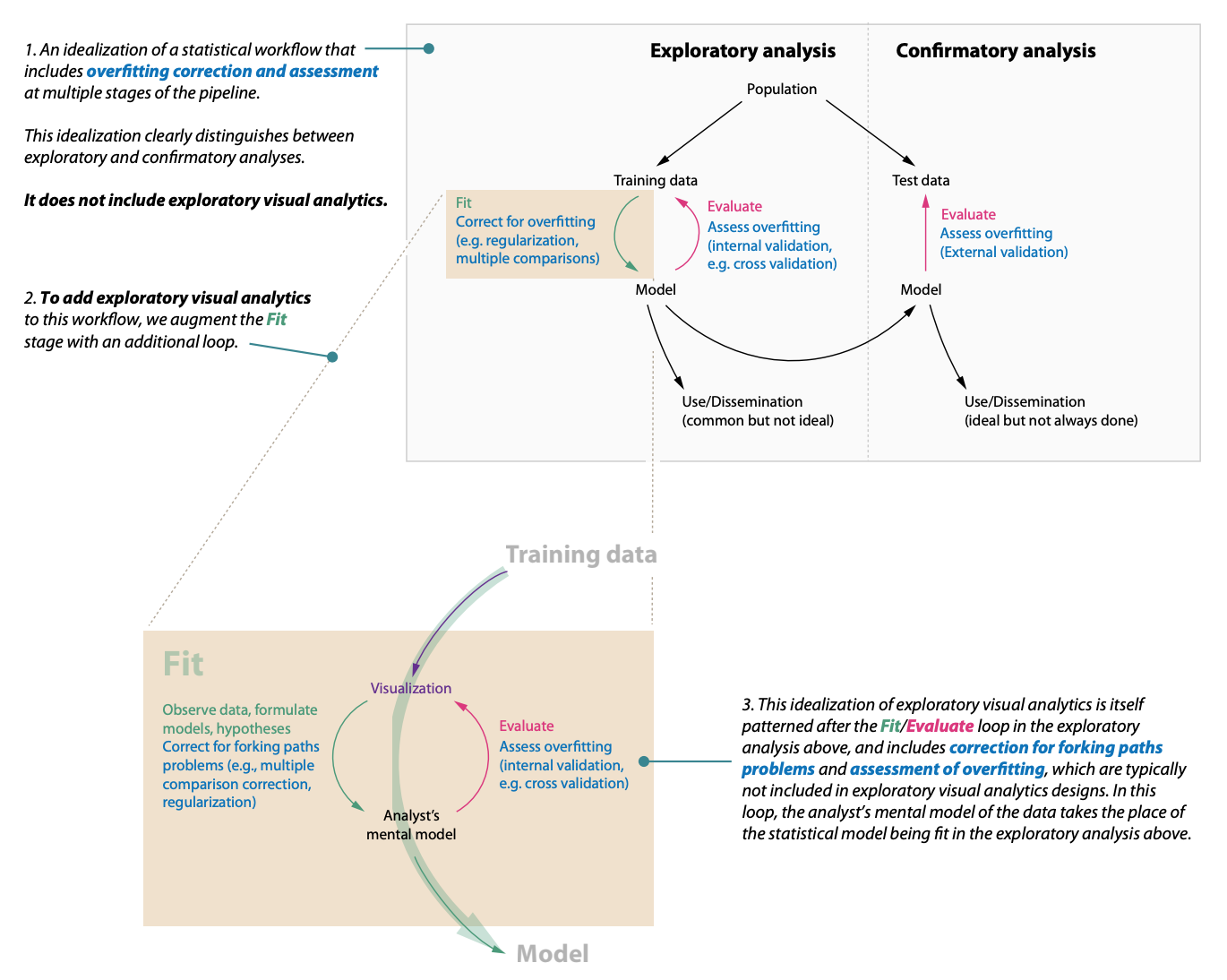The Garden of Forking Paths in Visualization: A Design Space for Reliable Exploratory Visual Analytics
BELIV 2018Abstract
Tukey emphasized decades ago that taking exploratory findings as confirmatory is “destructively foolish”. We reframe recent conversations about the reliability of results from exploratory visual analytics—such as the multiple comparisons problem—in terms of Gelman and Loken’s garden of forking paths to lay out a design space for addressing the forking paths problem in visual analytics. This design space encompasses existing approaches to address the forking paths problem (multiple comparison correction) as well as solutions that have not been applied to exploratory visual analytics (regularization). We also discuss how perceptual bias correction techniques may be used to correct biases induced in analysts’ understanding of their data due to the forking paths problem, and outline how this problem can be cast as a threat to validity within Munzner’s Nested Model of visualization design. Finally, we suggest paper review guidelines to encourage reviewers to consider the forking paths problem when evaluating future designs of visual analytics tools.
Citation
BibTeX
@inproceedings{forking-paths-2018,
title = {The Garden of Forking Paths in Visualization: A Design Space for Reliable Exploratory Visual Analytics : Position Paper},
author = {Pu, Xiaoying and Kay, Matthew},
year = 2018,
booktitle = {2018 IEEE Evaluation and Beyond - Methodological Approaches for Visualization (BELIV)},
pages = {37--45},
doi = {10.1109/BELIV.2018.8634103}
}

